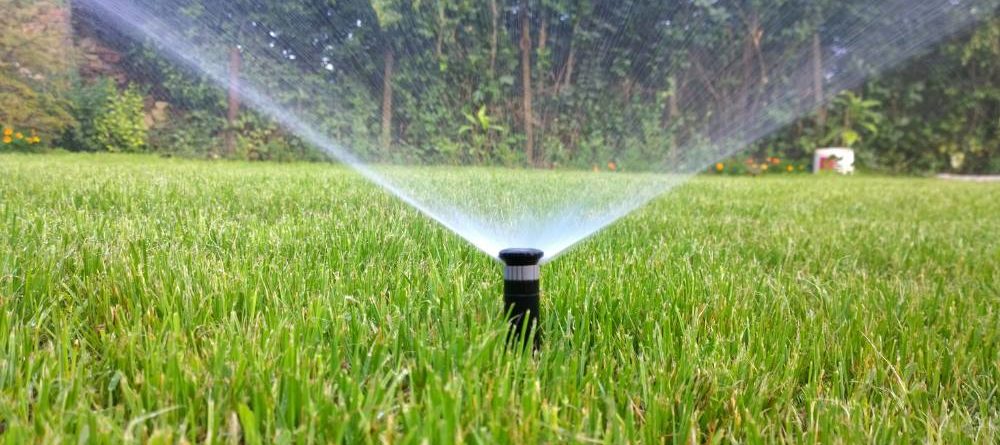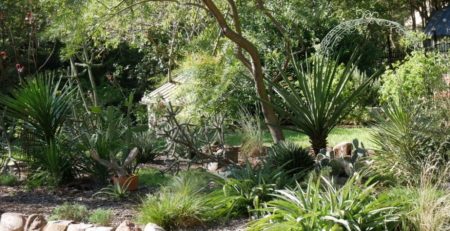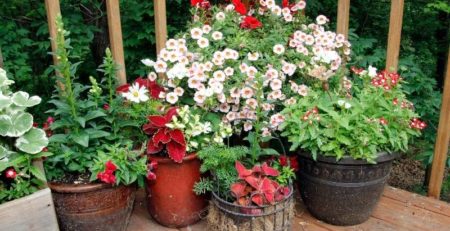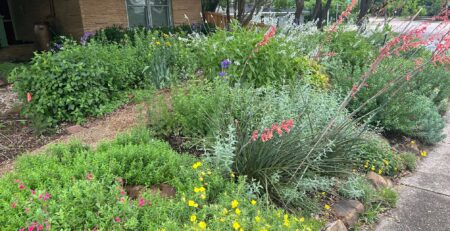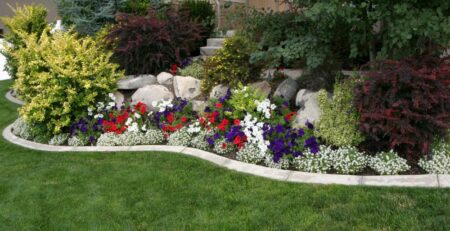Lush Landscaping in a Dry Summer
There’s a saying in Texas that if you don’t like the weather, wait a minute and it will change! While that folklore is generally true, it is also true that drought has become much more common in Texas. The National Oceanic and Atmospheric Administration (NOAA) estimates that there have been 18 drought events with an economic impact of $1 billion or more in Texas since 1980. The US Geological Survey website notes that, “Drought is a serious environmental threat across the United States. Climate change exacerbates droughts by making them more frequent, longer, and more severe.”
Even though the majority of Texas has received above normal precipitation early in 2024, John Nielsen-Gammon, Texas state climatologist, expected drier conditions in May and June. He urged farmers to plant their crops earlier than normal this year.
What services should your landscape provide?
Before you start making decisions about how to drought- and heat-proof your landscape, it’s important to think about what you want your landscape to do for you. Most homeowners want a landscape that enhances their home’s curb appeal.
You might also want to consider what services your landscape provides for wildlife, the environment, and your foundation.
According to Doug Tallamy, author of Nature’s Best Hope: A New Approach to Conservation that Starts in Your Yard, you should have four ecological goals for your landscape. Your landscape should:
- support a diverse community of pollinators throughout the growing season
- provide energy for the local food web
- manage the watershed in which they lie
- remove carbon from the atmosphere where it is wreaking havoc on the earth’s climate
to protect the investment you’ve made in your home, your landscape practices should attempt to minimize foundation movement with proper watering techniques. The goal is to maintain a consistent moisture level around the edge of your foundation to minimize the shrink/swell cycle the soil goes through during periods of drought and floods.
When planning your foundation plantings, be sure to keep your foundation’s watering needs in mind. Use separate drip irrigation or soaker hoses that are placed six inches away from the edge of your foundation.
How can homeowners’ drought- and heat-proof their landscapes?
There are many ways to have a lush, green landscape in a dry summer. Following is a list of options:
Choose the best warm season turfgrass for your landscape
There are four varieties of adapted grasses that will survive and thrive in North Texas with proper irrigation during the summer:
- Bermuda grass
- Buffalo grass
- Augustine grass
- Zoysia grass
Check out Texas A&M AgriLife Research Extension’s publication Warm Season Turf Grass to help you choose the best for your lawn.
Use native or adapted plants
Native and adapted plants naturally thrive in the conditions that are common to north Texas (drought/flood cycles, extreme weather conditions). They offer many benefits during dry conditions:
- drought and heat tolerant
- generally require less water than non-native plants
- are insect and disease resistant
- require less fertilizers that can run off and cause water pollution
Use the Texas Superstar Plants list or the Native and Adapted Plants for Texas Landscapes to guide your selections.
Reduce your turf area and replace it with native vegetation that requires less water to stay healthy. According to the Newcomers Guide to Gardening in North Texas (link to: https://twri.tamu.edu/media/5426/newcomers_guide-2020_reorg2.pdf ), following the “Landscape Rule of Thirds” will give you more visual appeal, usable space, and a reduction in water use. When designing your landscape, use these proportions:
- 1/3 drought tolerant turfgrass
- 1/3 native and adapted planting beds; and
- 1/3 pervious hardscape
Create hydrozones for plants with similar water needs.
Don’t plant your thirsty annuals next to your desert-loving red yuccas and water them the same amount and length of time.They won’t like it! And you’ll have the expense and extra work of needing to replace them.
It’s best to be intentional in planning your landscape. Some people can wing it with success. Most of us can’t. Start with a plan and follow it. An excellent resource for designing a water wise landscape is Planning the Home Landscape – Earth-Kind® Edition by William Welch, Extension Landscape Horticulturist.
And speaking of being intentional, Dallas County Master Gardener Janet Smith was once told by a wise gardener not to buy any plants unless you already have a hole dug for them at home! What a great way to reduce impulse purchases!
Don’t forget to plan your foundation’s watering needs into your landscape design plan. Your foundation may need more (or less) water than the water-efficient, native or adapted plants in the planting beds that abut the foundation.
Water efficiently
Water early in the morning to reduce evaporation. Use the most efficient watering methods available (soaker hoses, drip irrigation, sprinklers that spray large drops). Don’t water too much too fast. Make sure your water is soaking in — not running off down the street.
But don’t water too little either. You’ve made an investment in your landscape and home and you don’t want to lose it due to lack of water. It’s important to continue watering your foundation during a drought so that foundation movement doesn’t damage your house.
Make sure you’re honoring your community’s drought restrictions when they are in place. In the city of Dallas, drip irrigation, soaker hoses and hand-watering are permitted on any day.
Consult the Earth-Kind Drought Preparedness (link to: https://aggie-horticulture.tamu.edu/earthkind/drought/ ) website for tips and resources.
Consider installing artificial turf or painting your lawn green (seriously!)
These aren’t the preferred solutions for most people who consider themselves gardeners, but they might be good options for people who don’t currently have the time or inclination for maintaining a lush, green turf during challenging conditions.

